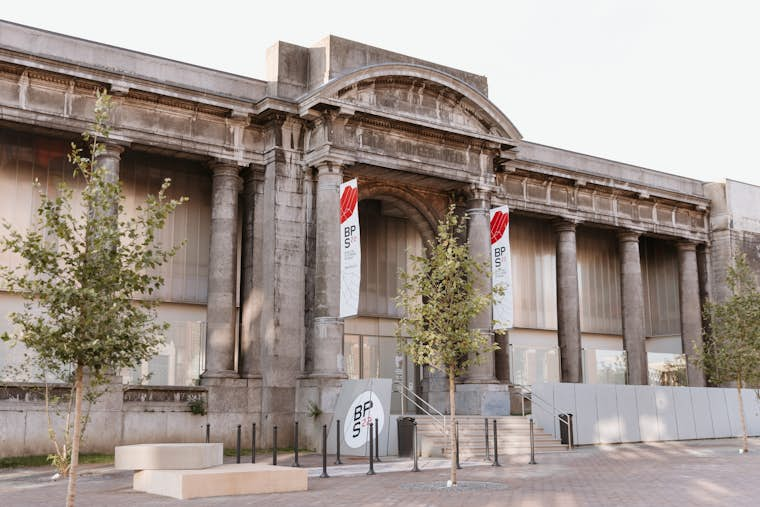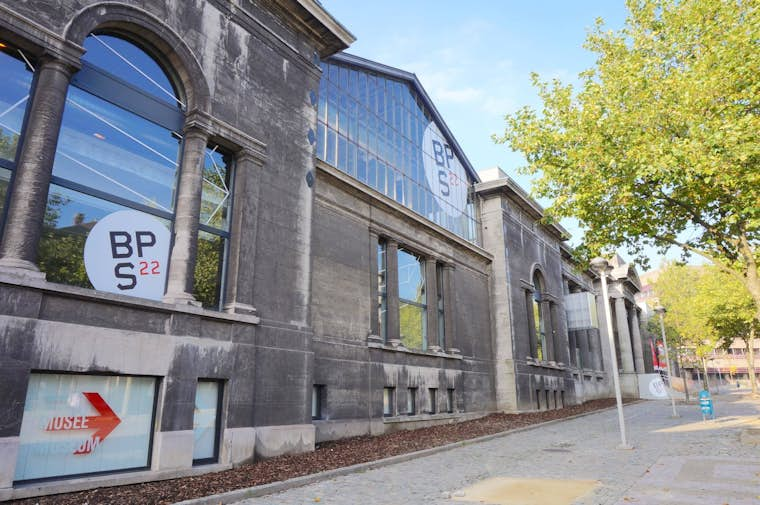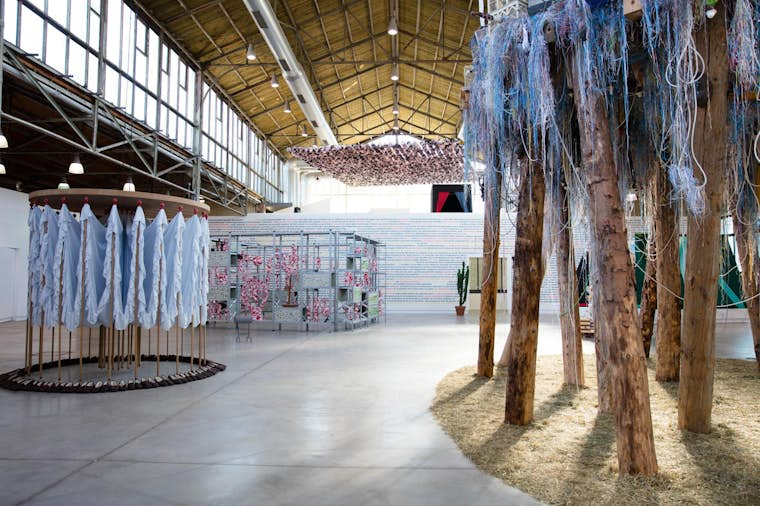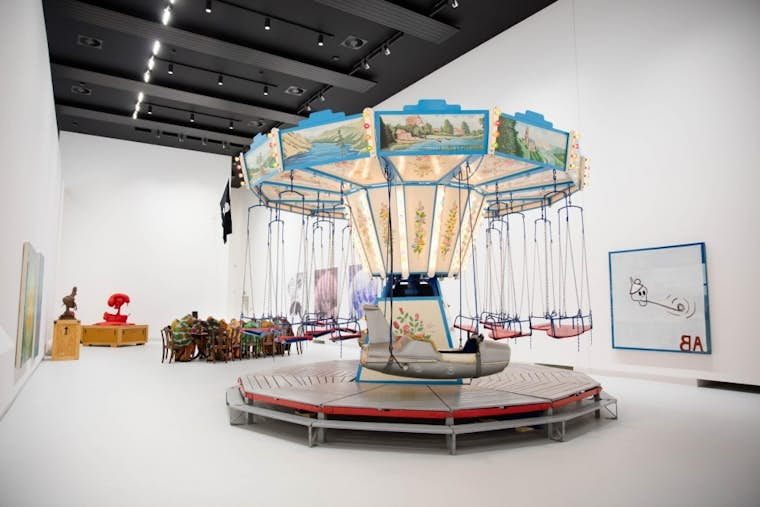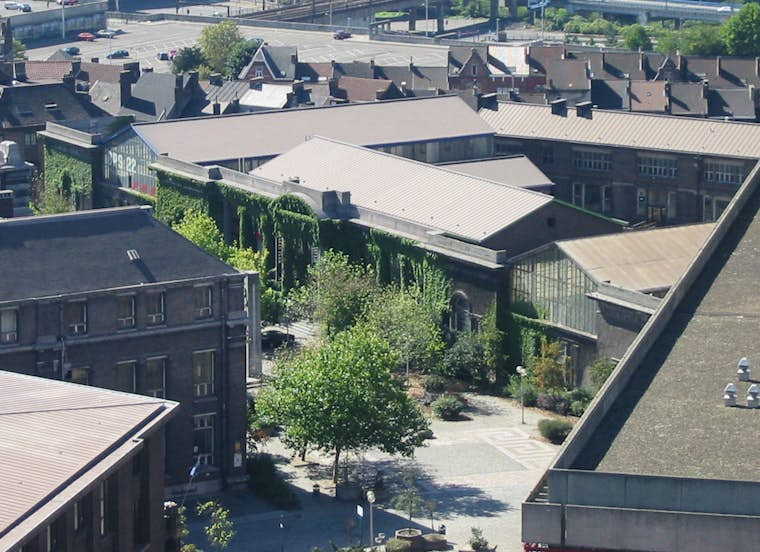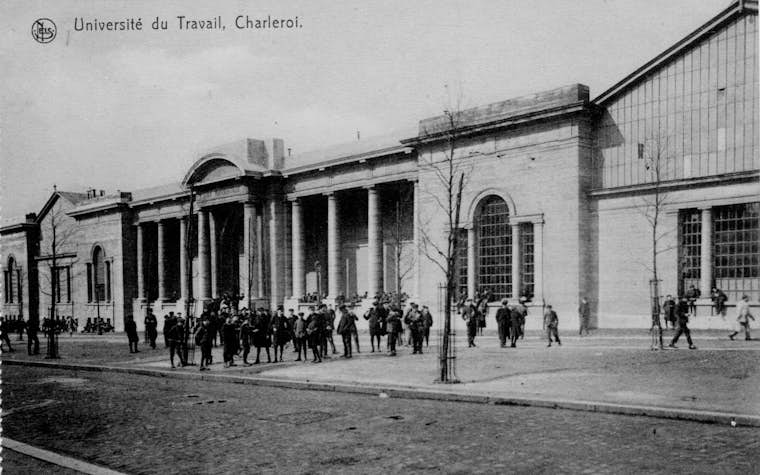The BPS22 is located in an old industrial hall of nearly 2500m2, within the premises of the Paul Pastur University of Work. A 1911 industrial edifice made with glass and iron, it was erected during the Commercial and Industrial Exhibition in Charleroi for the Fine Arts Pavilion. Once the event finished, these buildings became the premises of the new University of Work which had two objections: to ensure the education of citizens and to provide industries with every type of worker needed, from industrial workers to technical engineers and chemists. The university site is an illustration of the pre-emptive policy of social elevation which developed in Belgium in the early 20th century.
Designed by the architect Gabriel Devreux, the Workshops (previously called the Solvay Provincial Building, abbreviated as BPS22 in French) are an architectural whole whose impact is created by historical references, such as the neoclassical concrete colonnade, the symbol of a political power perpetuating an ancient social hierarchy. The central row of columns is topped by a curved pediment and flanked by Palladian windows on both sides. The principle innovation, at the time, was the glass panels constituting the two great halls linked by the columns. These new materials, glass and iron, were a reference to the industrial wealth of the region. They were used for their technical qualities, their symbolic significance and also for the general aesthetic appearance of the building.
The halls are configured like a classic basilica, with a central nave flanked by two colonnades. This referential architecture is evidence of the 'removal of holiness' suggested by social art in the Walloon region at the end of the 19th century and in the early 20th century: from the church to the factory, with its procession of new martyrs, secular pietàs, and so on. During the Commercial and Industrial Exhibition in 1911, the halls housed the Fine Arts Pavilion. This was an exhibition of Walloon art organised by the Minister Jules Destrée, according to his autonomist political manifesto which began with, 'Sir, there are no more Belgians'. Considering the surface area of each wing, approximately 1000 m2, it is likely that that the structure of the exhibition space was used for large canvases, which was frequent at the time, on which paintings were hung.
These buildings, now partially listed by the Walloon region, were then filled with workshops for industrial learning, such as clothes manufacture, masonry or welding. The walls still bear the scars of these subsequent activities. Rebaptised BPS22, the building became a museum in 2000, recognised as much on a local level as a national or international level.
Since January 2014, extension work is transforming the BPS22 into the Hainaut Province's art museum. Following competitive bidding, the work on this ancient industrial hall was entrusted to the architectural firm Archiscénographie Roland, who had already carried out renovations at the Félicien Rops Museum in Namur, and the Abattoirs in Mons (in collaboration with Matador).
For the BPS22, the project plans to transform one wing, the Pierre Dupont room, into an immense 'white box' of 800m², strictly respecting museum standards. The Great Hall, the 'crude' industrial building of 1200m², will be preserved, as is particularly adapted to forms of experimental contemporary art and it is a part of the identity of the BPS22. In these two great distinct spaces, two experiences are proposed: the first being contextual and linked to the history of the site and the building, the second, aseptic, atemporal and atopic, in accordance with the modernist tradition since 1960s.
In addition, the diversification of the spaces was also given importance. Several small rooms, including the Grenier, Mirador and Project Rooms, have been created, meaning that the BPS22 can now show art projects in smaller formats, as well as 'quirky' experiences or more intimite works. A set has also been created for performances or individual concerts. Lastly, artists will be able work in the new studio to develop their productions in situ.
Welcoming the public was given special attention. Apart from the entrance area which has been completely restructured to encourage circulation in the exhibition rooms, one of the seminal areas of the BPS22, mediation, was emphasised by the creation of two rooms for learning activity, the Workshop and the Lab. A third room, the Local room, has been dedicated to activities carried out with local inhabitants.
